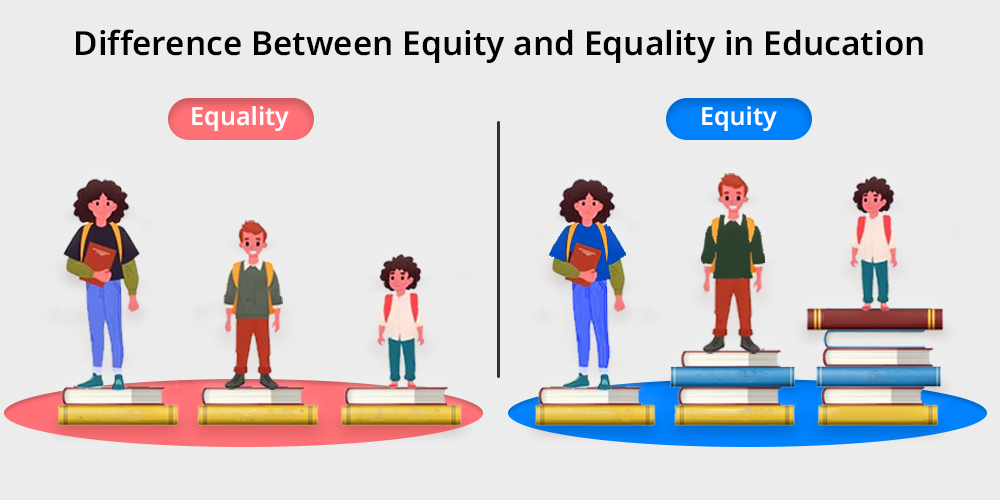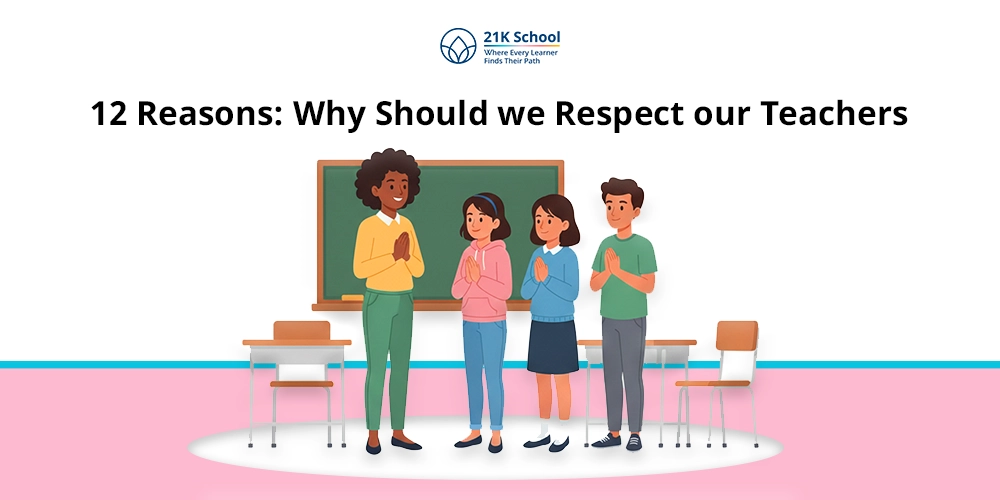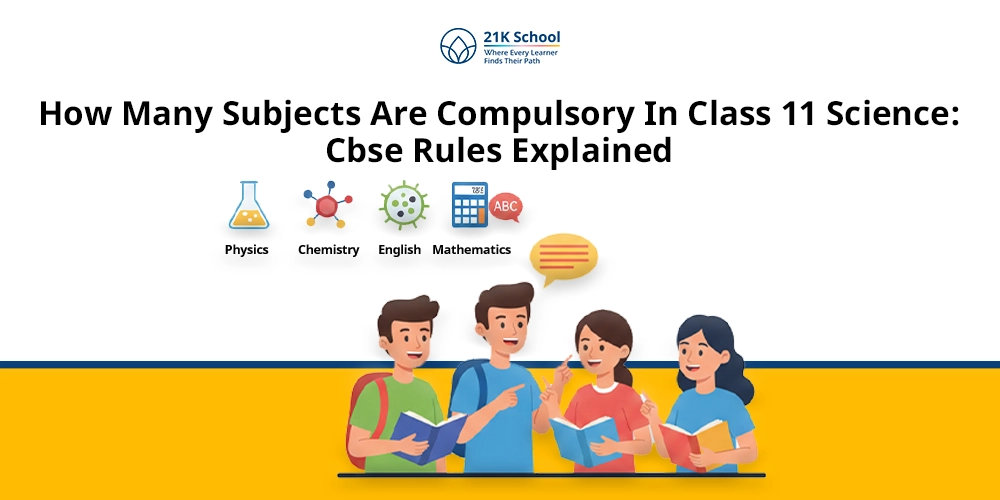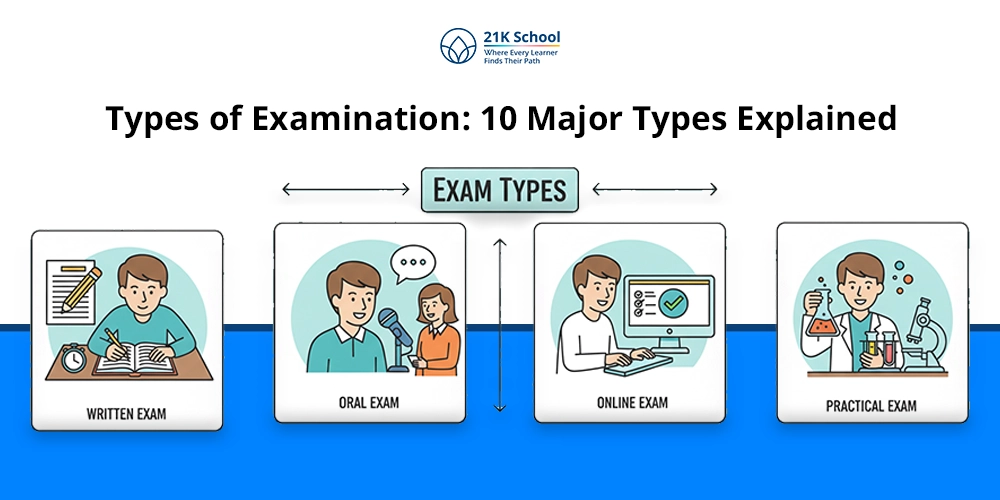
The growing student diversity in present-day classrooms creates a need to distinguish between two key concepts – equity and equality. The similar appearance of the terms hides major differences concerning their educational definitions and practices.
Clearing the distinction between equity and equality is an integral component to building positive learning environments. Such settings need to be fair, inclusive, and conducive to all students (including those belonging to the marginalized groups).
This piece goes through details about the definitions of equality and equity and a comparison chart. Read on as it provides methods for how schools can implement educational equity principles in their regular practice.
Contents
What is Equity and Equality in Education?
While both equity and equality share similar origins in fair treatment principles, they operate on different levels of provision. Understanding the difference makes it easy for schools to identify specific educational needs of students as well.
Let us understand the equity in education and equality in education one-by-one below:
What is Equity in Education?
Equity on the other hand means offering special resources and care to cater for individual students’ needs. It acknowledges that learners’ entry points and problems are different, thus they need to use different tools to be successful.
The children learning in an equitable school will be the ones to learn harder. Whereby students who are struggling may receive more sessions of the same tutors, or English learners may receive bilingual materials.
For instance: The needs of an ADHD student can vary from an environment that does not distract them to a lax deadline. Equity is driven to attain equitable results, not necessarily standard resources or access.
In essence:
- Equality = Sameness
- Equity = Fairness
While equality provides everyone with the same thing, equity provides everyone with what they need to prosper.
What is the Importance of Equity in Education?
Equity in education guarantees each learner’s basic needs that enable them to perform well as per the prevailing societal conditions. It acknowledges that learners are present with different difficulties like learning, financial or even language.
Equity is a concept that is diametrically opposed to equality. It means that justice must be viewed as equal treatment for all despite the differences. Be it in the inherent ability and effort of individuals.
It is effective in eradicating disparities and assisting in bridging gaps between students that exist in the achievement domains. Therefore, every child must have an equal opportunity to succeed in school and in life. This is one way of avoiding discriminating against an unfair society.
What is Equality in Education?
Equality in education entails equalising the resources, possibility, and assistance reserved for all the students. Standardization matters for education because students should have equal access to textbooks, curriculum, technology, and the same physical school facilities.
To not get deviated by the number of courses present, here’s how to choose the right curriculum for your child.
Everybody should get equal treatment irrespective of their unique qualities. Students in an equal education system would get one standard math textbook. This depicts access to an equal amount of tutoring that must use identical formative assessment tools.
However equitable it appears, it frequently does not take into account students’ different situations. For instance: language barriers, learning disabilities, or absent home assistance, which shape their ability to utilize such resources productively.
What is the importance of Equality in Education?
Equality in education is provision of equal opportunity and treatment to students such that no discrimination is made. It goes further to state that everyone should be treated equally without regard to their race, color, religion or sex.
This approach seeks to do away with distinction and bring equal grounds for learning and instruction. Schools, teachers, and systems ensure that no student or group of students is favored over the other since everyone is equal.
However, it may not address our needs. Equity helps ensure that basic education is a right for all students and they must receive standard quality education.
What is the Difference Between Equity and Equality in Education?
Explanation of Key Differences
- Definition & Goal: In equality, things are made identical, while in equity, fairness is emphasized. Equality presupposes a level playing field, and equity tries to level the field by dealing with disparities.
- Approach & Focus: While equity calls for specially tailored support in terms of emotional, or academics, equality stays committed to uniformity. Equity also sorts the barriers to learning.
- Practical Examples: When the students of different socioeconomic status are brought together, equality would mean providing a laptop to each one. Equity would take further steps—checking if they have internet access, tech support, or a quiet room to work at home.
- Outcome: Being corrupt invites an educated electorate to be flawed but equalization brings inequities. It doesn’t consider the hardships other students have to endure. Equity looks to reduce performance gaps by providing students with what is needed, not with what is the same.
| Parameters | Equity | Equality |
|---|---|---|
| Definition | Giving resources to students as per their needs. | Giving equal resources to each student. |
| Objective | Fair education system accessing personalized learning | Reaching equal resources and access to everyone |
| Measures | Incorporating flexibility to reach diverse needs | Following standard education system across the board |
| Target | Acknowledgement of differences besides multi-factorial barriers | Bringing uniformity while ignoring disparities |
| Example | Added assistance for students with specially-abled children | Same curriculum for each and every student |
| Result | Equal opportunity for success | Students might feel left out due to different beginnings |
How to Leverage Equity in Learning Environments
In order for learning institutions to ensure there is fairness in various learning institutions, they should adopt equity strategies. Here are four actionable steps to equitize learning environments:
1. Equitable Resources
Allocate resources on the basis of particular individual student requirements. For instance, students from poverty backgrounds might require free lunch, school supplies, or public transport.
It is possible that the students with disabilities might need assistive technology or one-on-one assistance. This allocation gives every student an equal opportunity of success.
These resources must include the critical components of equity-focused teaching.
2. Equitable Policies
Arbitrary deficiencies have to be eliminated through the formulation of policies in schools. These include flexible deadlines, culturally responsive teaching, anti-bias discipline approaches, and diverse staff members’ careers.
Equitable policies involve inclusion so that every student’s need is covered. Even including those of any race, those who speak a different language, have disabilities, or financial incapabilities.
Instilling the methods on how to promote cultural awareness in classrooms, is essential for these policies.
3. Equitable Family Engagement
The concept of equitable engagement includes having families as part of the learning process and creating stronger school-home connections. Rigorously addressing the diversity of family structures and backgrounds is essential.
Parents can have parent-teacher meetings in several languages, have childcare during events, or have communication in culturally appropriate forms.
4. Equitable Goal-setting
Rather than using the same aims for all students, equity-based classrooms set individual goals. This is on the basis of readiness, potential and previous performance of the students.
It revolves around engaging the use of data-driven resources to develop Individualized Education Programs (IEPs). Monitoring an agile progress, and concentrative emphasis on growth instead of confining grade comparisons is also encouraged.
In Conclusion
Equity and equality differ and are not to be used interchangeably as they have serious connotations when applied in education. Whereas, equality provides everyone with the same tools, equity does one better.
It provides each student with the right tools for them to excel. The existence of diversity of starting points due to globalization in education entails that only equality is not sufficient.
Educational institutions need to become equity-first institutions by defining teaching, resources, and policies in a way that serves the students. With the adoption of equity, the system of learning transforms into a path to prosperity, self-assertion, and social change.
Knowing and implementing the principles of equity has reformed educational scenarios. Educators, families, and policy makers can construct classrooms where all students, regardless of their circumstances, will have the opportunity to thrive.



